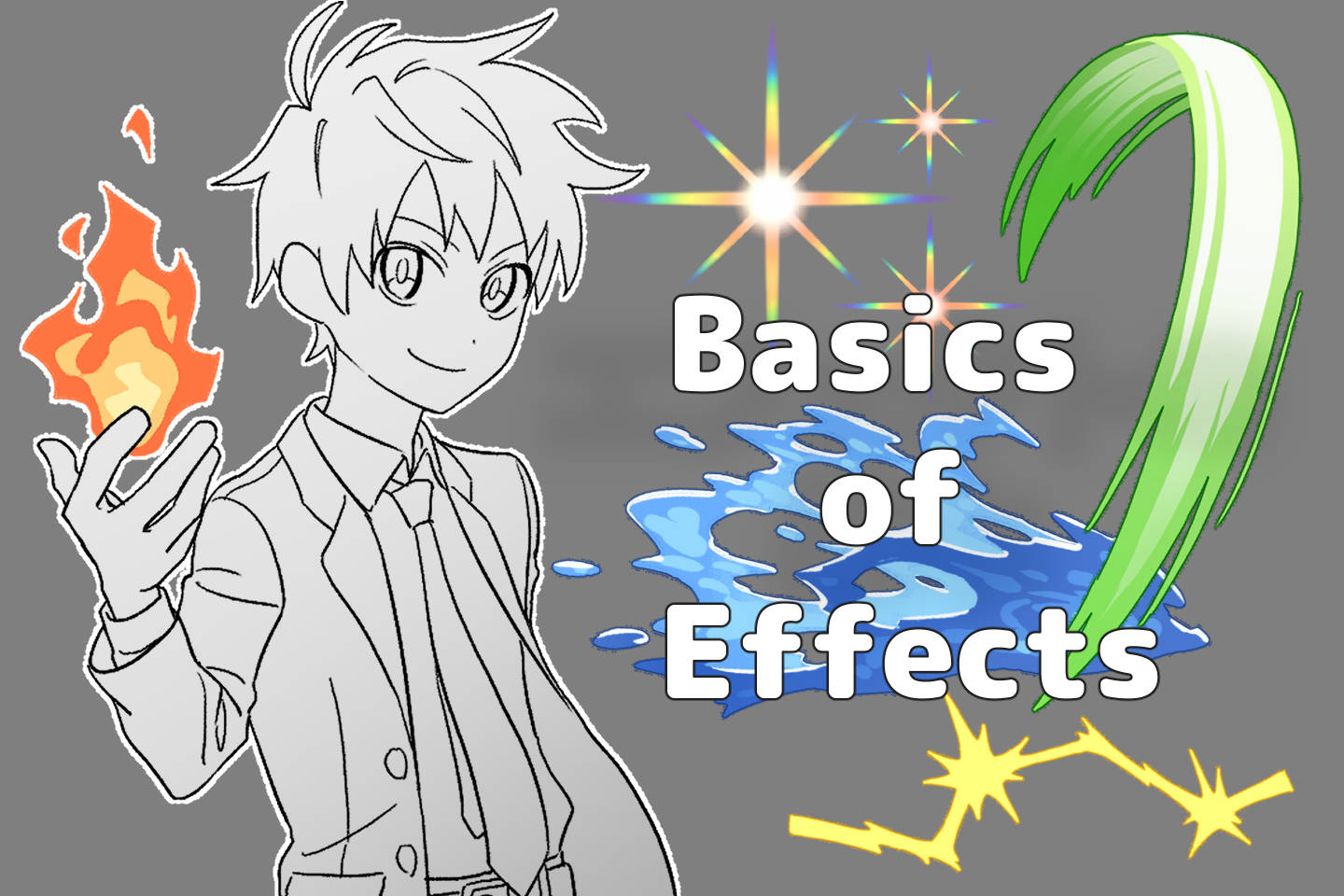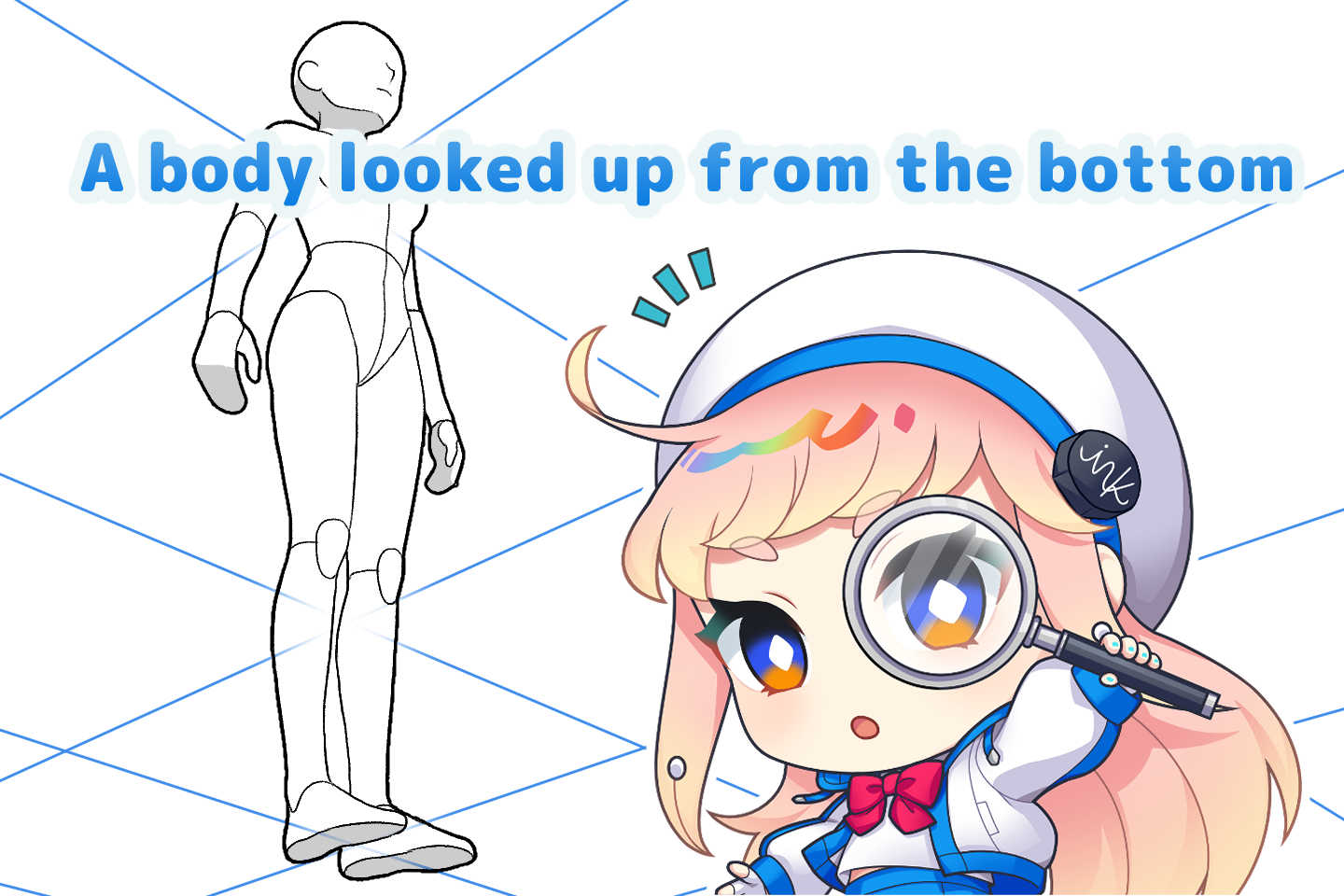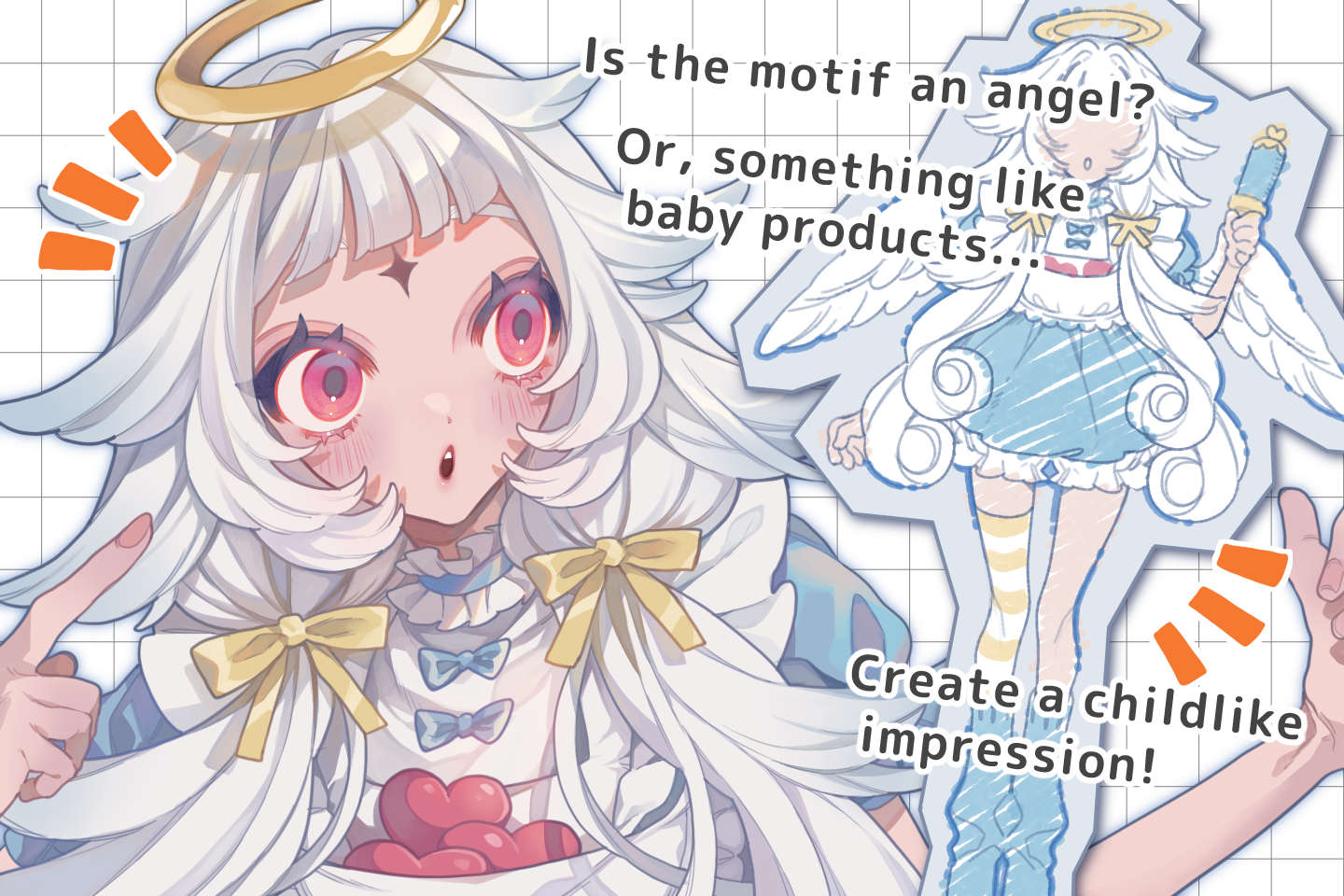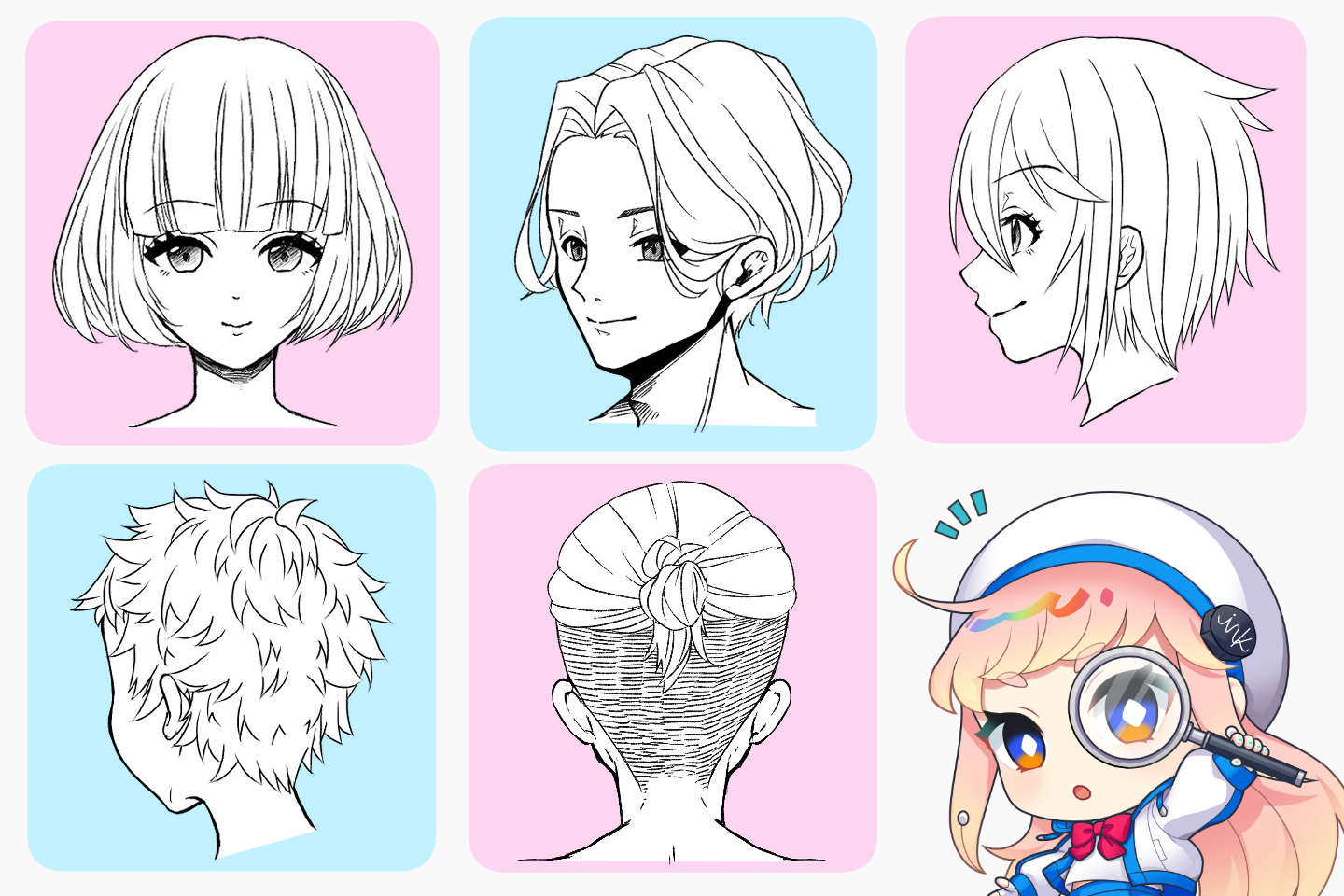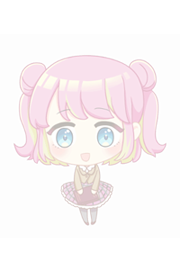
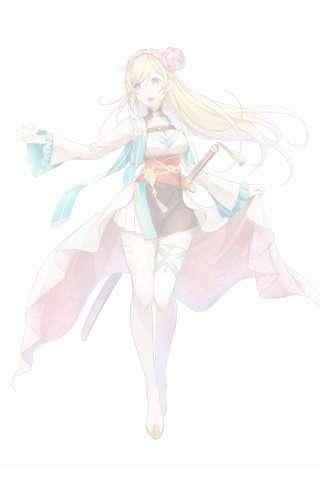
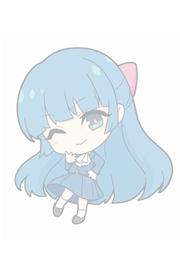
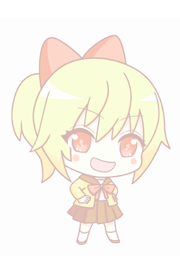
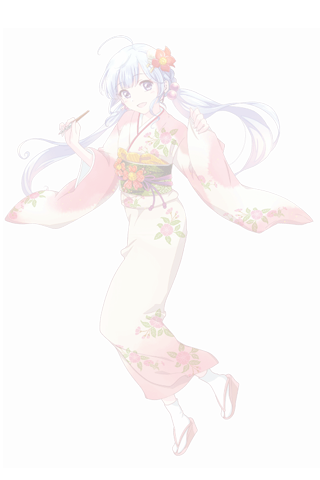








Faces are the lives of characters. If possible, you want to draw them beautifully, cutely, coolly, and in the ideal shape, right?
We know, however, some beginners don’t know how to draw them, and
others who are practicing it but can’t get the shape of the face they want.
So, do you know tentative pictures? We assume there are people who know them and others don’t.
A tentative picture is like a guide to help you draw people, buildings and everything else without hesitation and in a well-balanced way.
For beginners and those who are still practicing, drawing tentative pictures is a guide to drawing the ideal picture.
Let’s learn how to draw facial tentative pictures here and take a step forward so that you can draw the faces you have in your mind! (Click here to learn about tentative pictures of the body.)
Why you draw tentative pictures of faces? Let’s understand a tentative picture
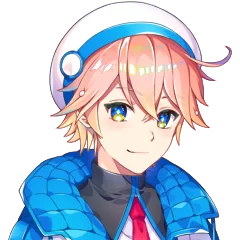
- POINT Why draw a tentative picture of the face?
-
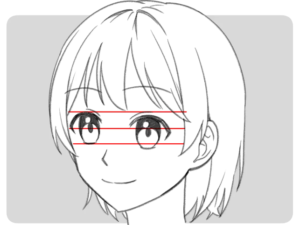
Drawing a tentative picture of the face makes it easier to notice any distortions in the illustration, and makes it easier to draw a more natural-looking, well-proportioned illustration.
- POINT You can also clearly see any misalignment of the parts
-
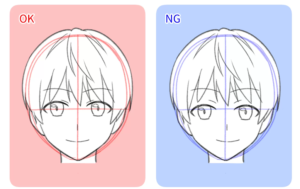
You can also clearly see any misalignment of the parts, so you can draw the face you have in your mind.
Let’s find the distortion in the tentative picture! An example with distortion
This is a face tilted to the side, viewed from the front.
Can you see where the distortion is in this face illustration?
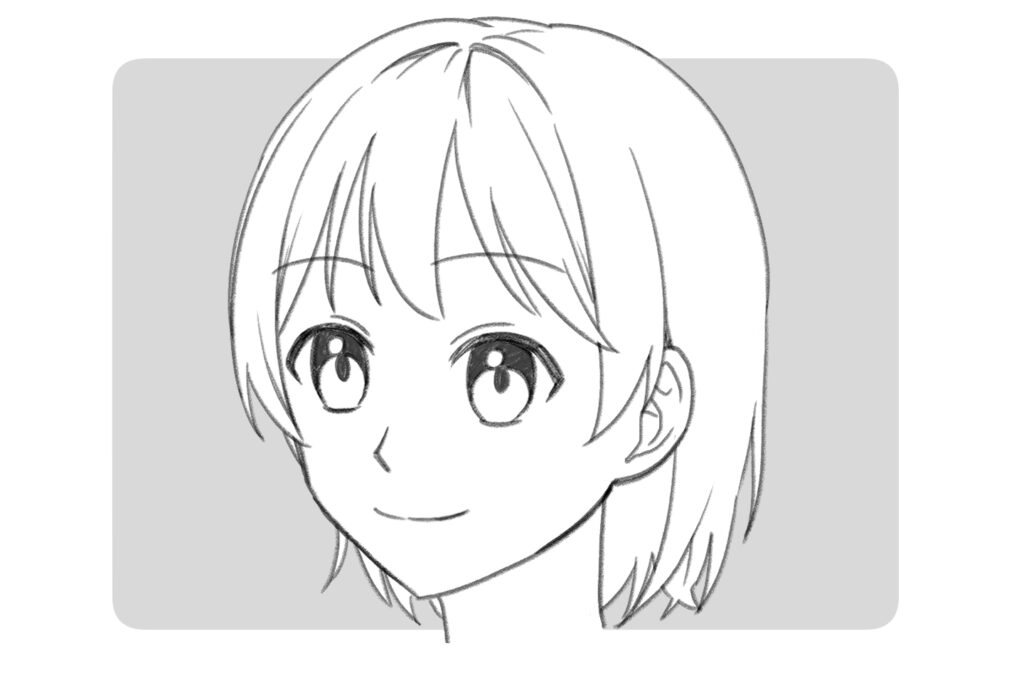
If you can see where it is distorted, how will you explain the distortion to someone? Imagine drawing a line on the picture to explain it.
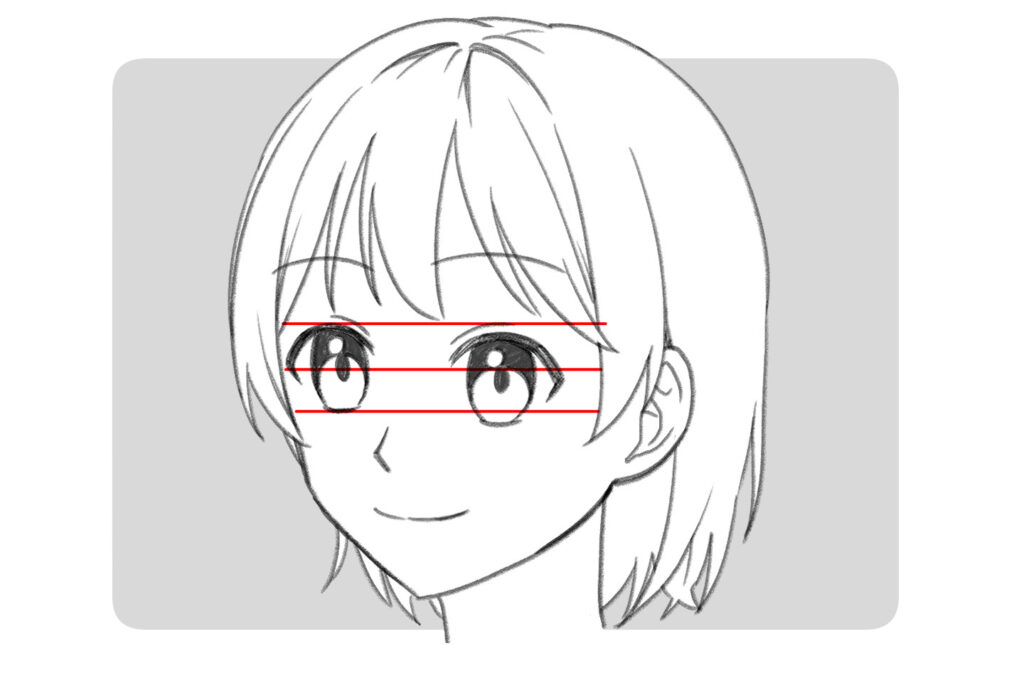
It’s easier to understand if you draw a straight line so you can compare the left and right eyes like this.
This line is the tentative picture.
Even if you can’t notice the distortion in the picture by looking at it, you can check the distortion in the face by drawing the tentative picture.
If you connect the parts of the face that are symmetrical on both sides with straight lines like this, and the lines are parallel, then the face is not distorted.
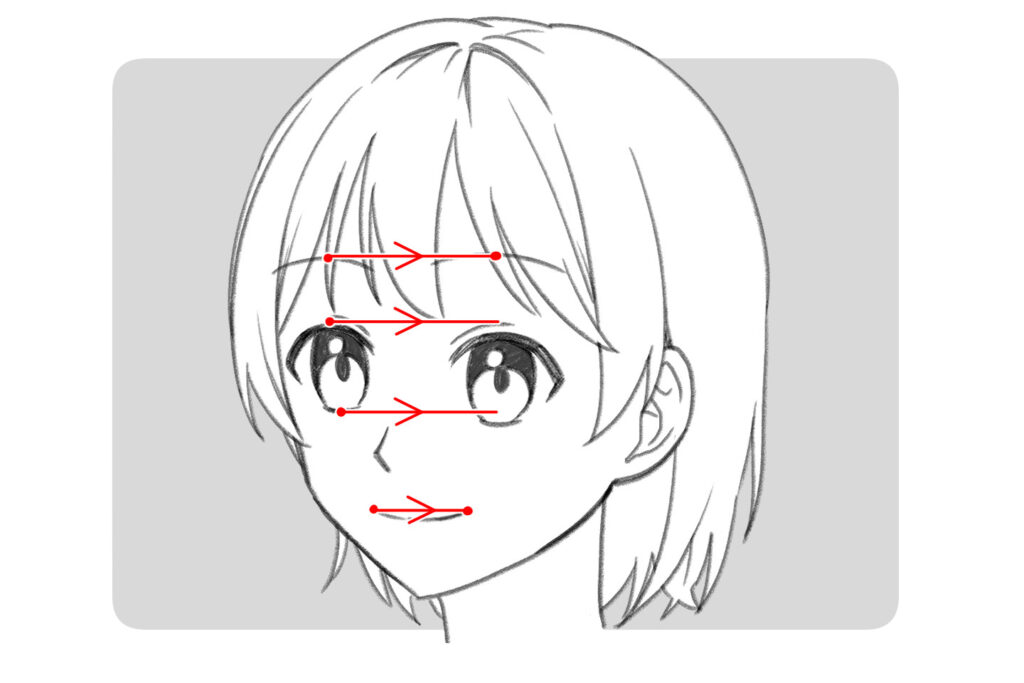
The eyebrows, eyes, and the edges of the mouth are parts of the face that are symmetrical on both sides.

To align the position of the parts of the face like this, we draw many parallel lines, and this is called getting the tentative picture.
Change the way you get the tentative picture depending on the face you want to draw
Actually, there is no rule to draw the tentative picture for a face.
This is because the shape of the tentative picture will change depending on the picture you want to draw.
Let’s take a close look at the following illustrations to see how the balance of the tentative picture changes depending on the pattern of picture.
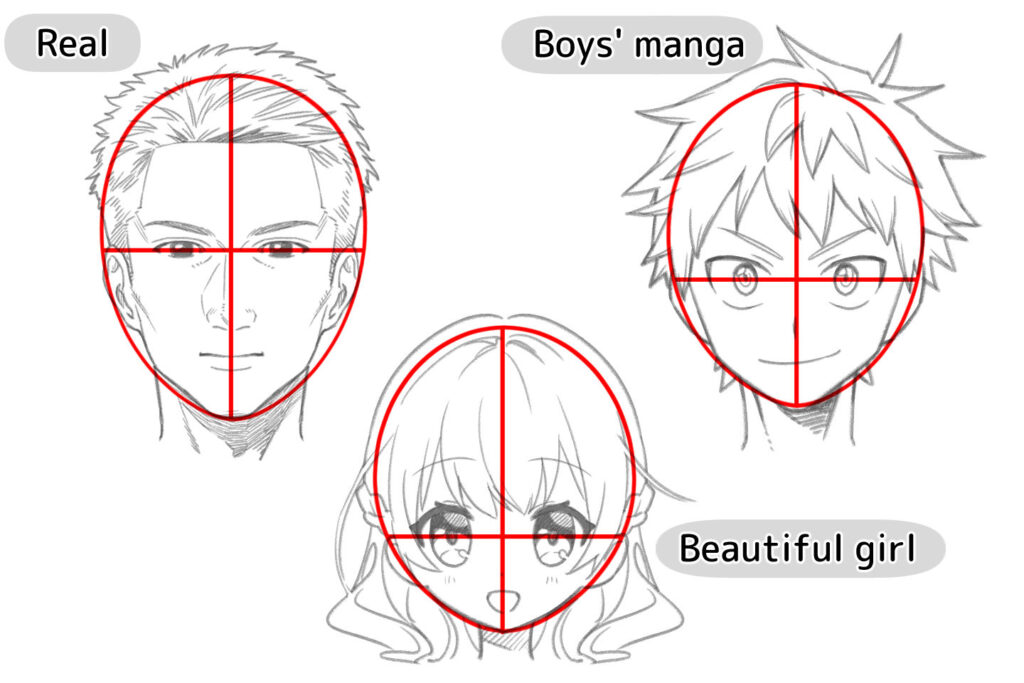
For example, even if you copy the way the tentative picture is drawn exactly as you see it on the internet, the balance of the face looks strange…
In that case, the tentative picture may not fit your drawing.
If you want to draw a beautiful girl with big eyes, but use a realistic-style tentative picture for it, it’s natural that the balance of the face won’t be the one you imagined.
If you encounter an ideal illustration that you want to draw, it’s a good idea to observe and study the shape of the tentative picture of the illustrated face carefully. If you can remember the shape of the tentative picture you found and use it in your own illustrations, you should be able to get much closer to your ideal illustration.
We recommend the most common tentative pictures of the face for beginners
Even though there are no rules for the shape of a tentative picture of a face, if you are not sure which one to use, we recommend you to draw with the most commonly used tentative picture.
The most common shapes of tentative pictures of faces are as follows:
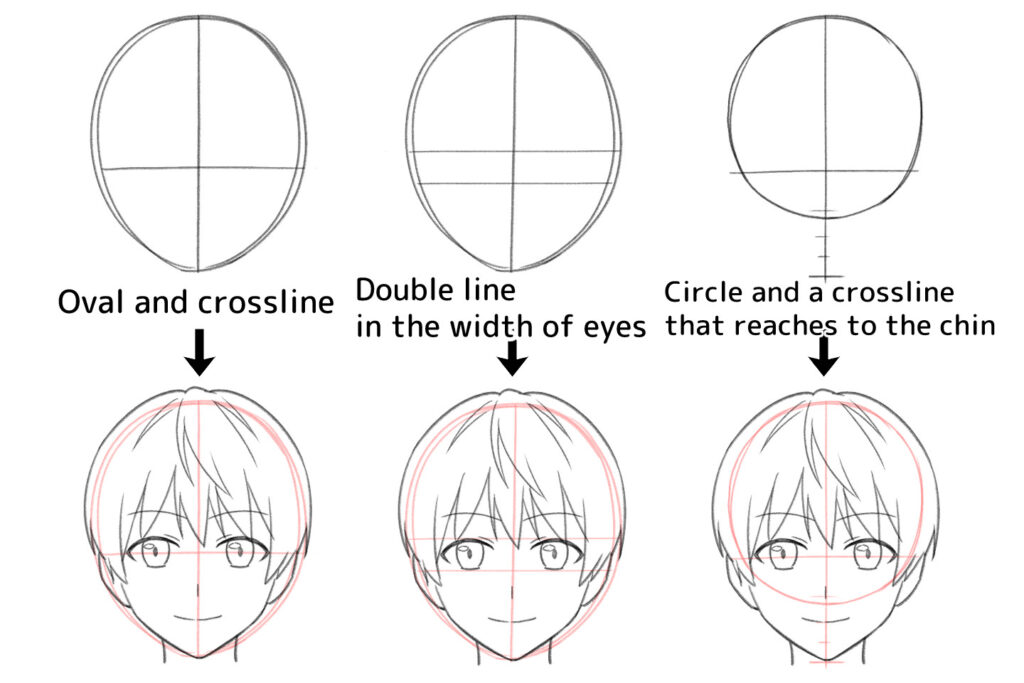
Most tentative pictures are a combination of a circle to indicate the size and roundness of the face, a horizontal line to indicate the height of the eyes, and a vertical line to indicate the center of the face.
Differentiating between male and female faces when drawing the tentative picture of a face
You can also differentiate between male and female faces in tentative pictures.
In fact, if you don’t differentiate between male and female faces, the male face may not look like a male’s, and the female face may not look like a female’s.
Let’s compare the balance of tentative pictures for male and female faces.
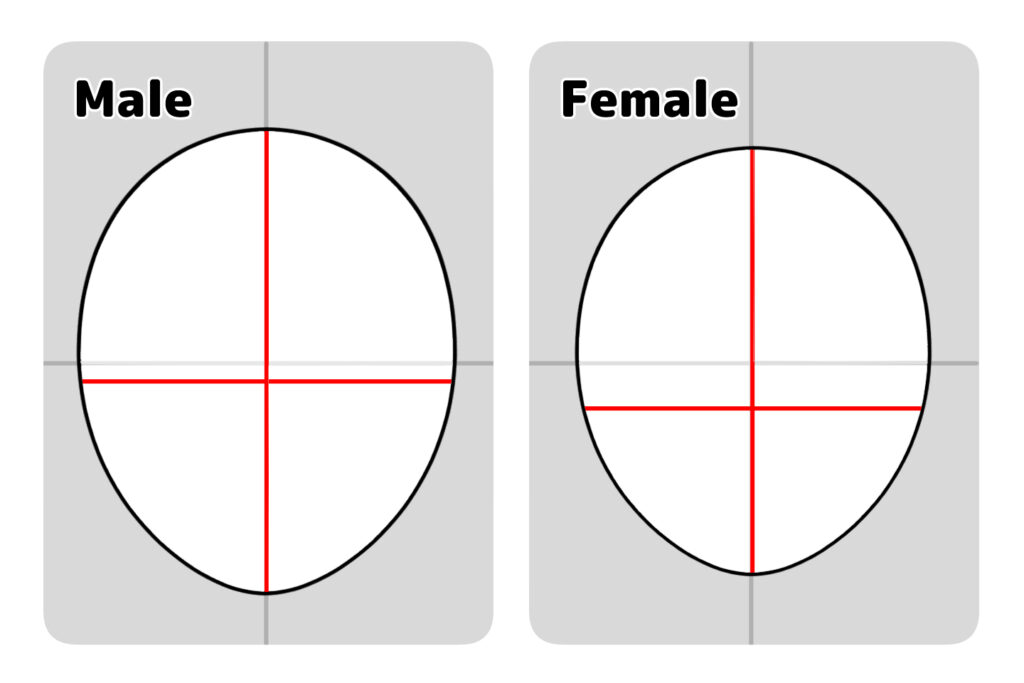
In this way, for men, the circle of the face should be longer vertically and the position of eyes should be higher, while for women, the circle should be slightly shorter vertically and the position of eyes should be lower than the one for men.
The shape of the outline also has a big impact on how the faces of men and women are drawn. For more details, please refer to the article on how to draw outlines.
It’s important to draw a face in line with the tentative picture
Even if you draw the tentative picture correctly, if you don’t draw a face in line with it, there’s no point in drawing the tentative picture.
Let’s place the facial features correctly in line with the tentative picture.
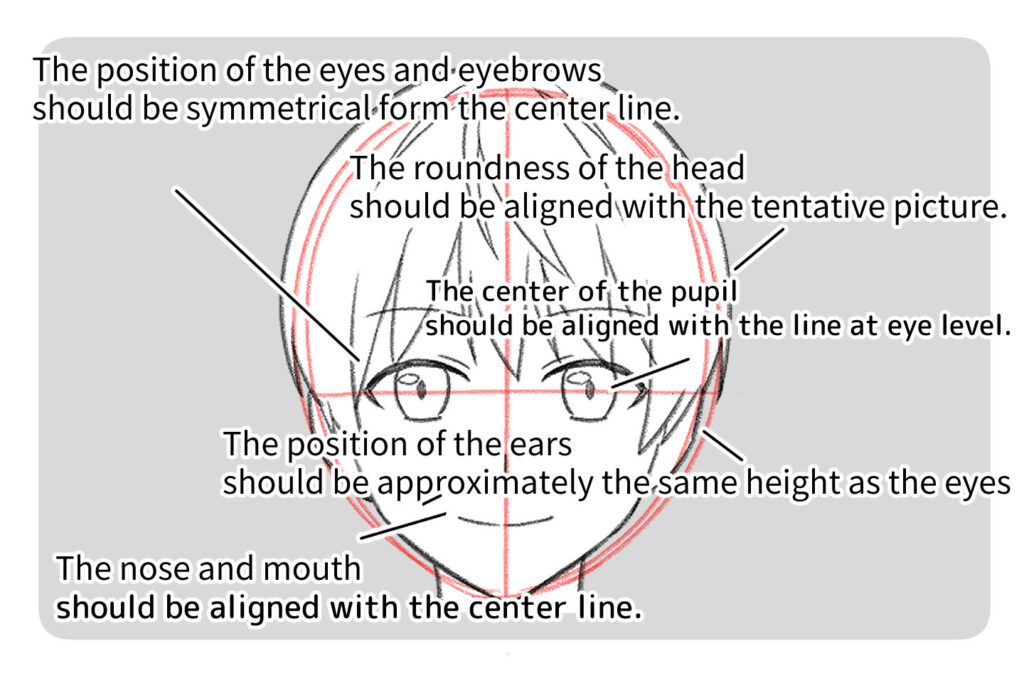
How to place the eyes along the tentative picture is also explained in detail in the Guide to Drawing Eyes.
Also, please refer to the following for further details on how to draw a face as seen diagonally and the approach to the tentative picture.
Even if you draw the tentative picture correctly, the face still ends up distorted! Three common causes
You’ve drawn the tentative picture correctly, and you’ve also drawn the facial features properly, but the face still ends up distorted… In cases like this, there are three common causes. Let’s look at the causes while observing the illustration you’ve drawn.
The tentative picture is not drawn correctly
The first is the case where you haven’t drawn the tentative picture well in the first place.
The tentative picture is a simple shape, but that’s why you can’t be careless. If the tentative picture is distorted, it will lead to distortion in the whole picture.
If you’ve drawn the tentative picture many times before drawing the picture, but the face still comes out distorted, then first of all you should practice drawing the tentative picture accurately.
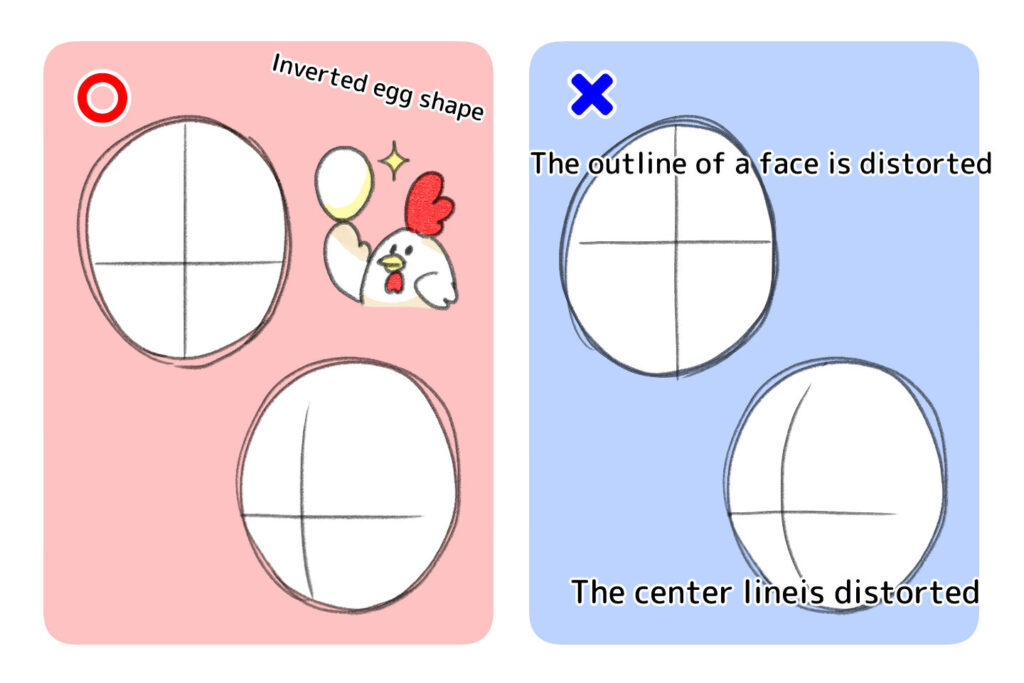
When drawing a tentative picture of a face that is facing diagonally, it is also important to be aware of the three-dimensionality of the face.
An effective way to be aware of three-dimensionality is to practice sketching.
It’s also a good idea to ask someone else to look at your tentative picture objectively and check whether there are any distortions or not.
The position of the facial features is off
The second pattern is where the facial features are not correctly positioned in relation to the tentative picture.
Even if you have drawn the tentative picture correctly, if you ignore this and just draw the facial features randomly, you’ve missed the point.
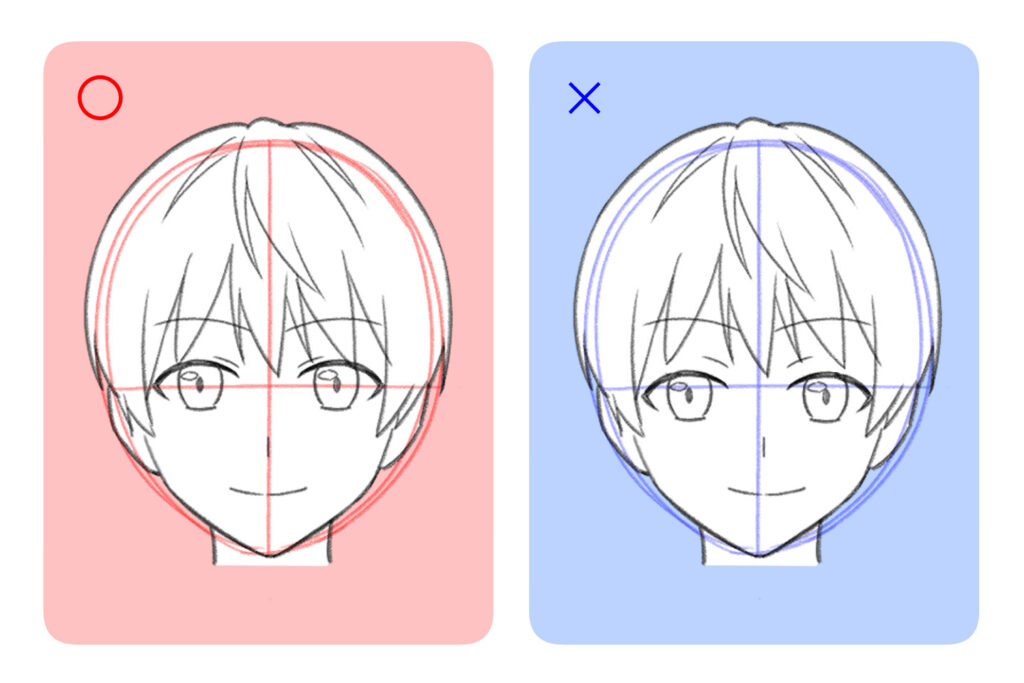
Once you have drawn the tentative picture, make sure you align the center of the eyes with the eye-level line, and the center of the nose and mouth with the vertical center line, etc., and be aware of placing the facial features correctly in relation to the tentative picture.
The facial features are distorted
The third pattern is when the facial features themselves are distorted.
Even if you draw the tentative picture correctly and place the features in the right position, if the shape itself is distorted, it will look unbalanced.
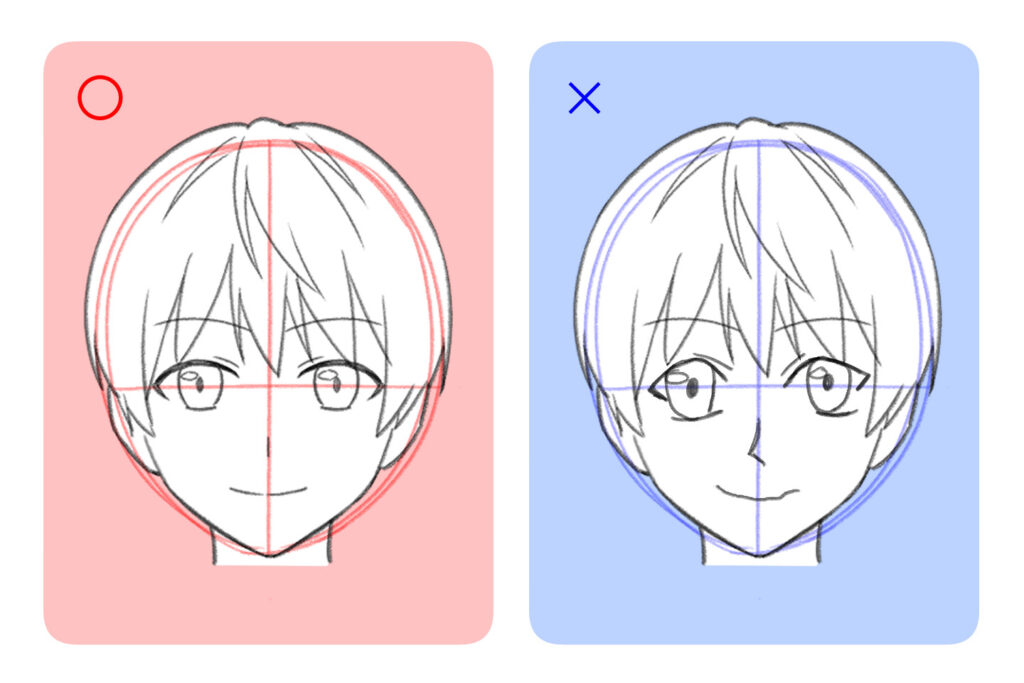
In particular, when drawing a face as seen from the front, make sure to draw the eyes, eyebrows, etc. symmetrically on both sides.
When drawing a face as seen diagonally, the three-dimensionality of each part such as eyes and nose, will change, so draw them in a way that suits the angle of the face.
Conclusion
The face is the life of a character. Even if you just look at a sample or read an article and think you understand, it’s not enough to draw a picture better than before.
If you try to draw something and it doesn’t turn out well, first of all, you should search for the reason why.
The first step towards improvement is to notice a feeling out of place in your drawing by yourself. Once you’ve noticed it, don’t leave it as it is – think about how you can fix it. Once you’ve found the answer and learn how to fix it, you’ll naturally improve.
